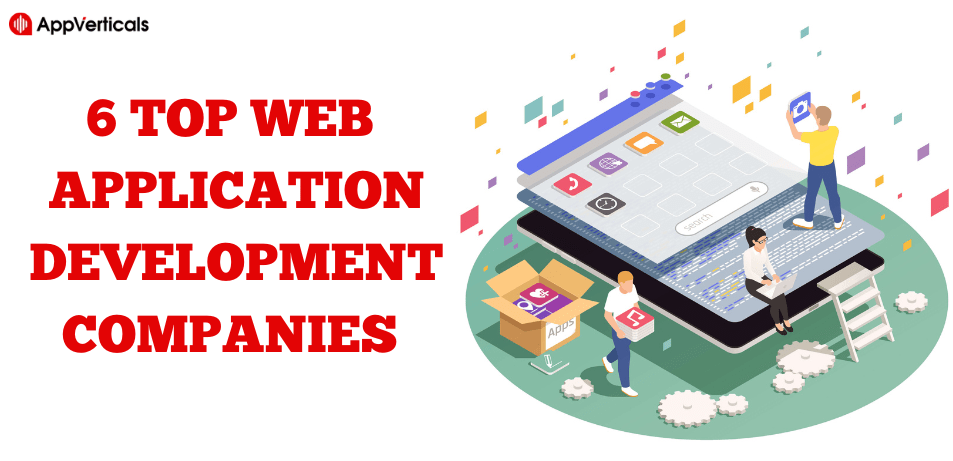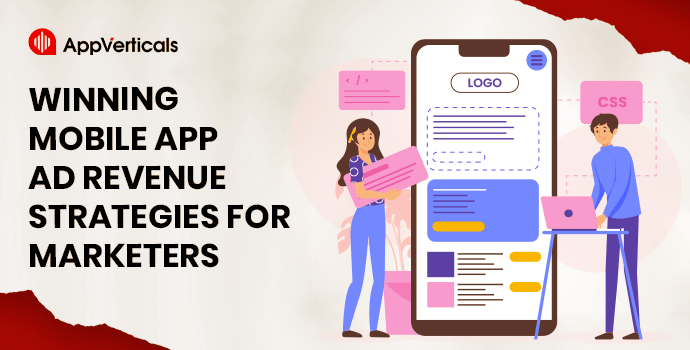In 2025, web applications are no longer optional, they’re the core of digital strategy. But most projects fail not due to bad code, but because the team lacked product focus or business alignment. A top web application development company goes beyond code.
It brings domain expertise, UX precision, and the discipline to build what users actually need. The best developers think like partners, not vendors—asking hard questions, validating assumptions, and delivering fast.
Whether you’re building a patient portal or a logistics dashboard, choosing the right team is strategic. And it can make or break your entire roadmap.
Let’s discuss it in detail!
What Makes a “Top” Web Application Developer Today?
The best web app developers in 2025 aren’t just writing code—they’re co-architecting outcomes.
Great development teams operate with four core characteristics:
- Technical Depth: They know the difference between cutting-edge and bleeding-edge. They pick the right tech for your context, not just what’s trending.
- Product Thinking: They’re not order-takers. They challenge assumptions. They align features with value.
- UX Obsession: They treat user experience as a strategic asset, not a design add-on.
- Delivery Reliability: They ship. On time. With accountability.
Let’s be blunt: most web application projects that fail don’t fail because of bad code. They fail because the development team lacked clarity, context, or commitment.
70% of digital initiatives underperform or fail due to a disconnect between business intent and delivery execution.
So when we say “top web application developers,” we’re not talking about those with the slickest portfolio, we’re talking about those who repeatedly turn uncertainty into usable software.
Web App Developer Evaluation: 5 Red Flags vs. 5 Green Lights
| Red Flags (Avoid These) | Green Lights (Look For These) |
|---|---|
| Vague timelines, no delivery roadmap | Clear milestones and delivery commitments |
| Overpromising on all tech stacks | Specialization in relevant tech + domain knowledge |
| No discovery phase | Structured discovery sprint before development |
| UX treated as optional or cosmetic | UX baked into the product process from day one |
| No post-launch support or iteration model | Ongoing support with analytics-driven iterations |
This table will help you quickly benchmark developers you’re evaluating.
Top Web Application Development Companies to Know in 2025
Here’s a short list, not based on hype, but based on results. These are the web application developers consistently delivering scalable, user-ready products.
1. AppVerticals — Building With Urgency, Shipping With Purpose
Why they’re here:
⭐ 4.9/5 on Clutch and GoodFirms.
🚀 MVPs delivered in 6–10 weeks.
🔐 Deep domain experience in EdTech, healthcare, logistics.
📈 Post-launch analytics baked into every build.
🧠 Product strategy led by UX-first thinking.

What sets them apart:
In 2025, speed alone isn’t impressive. Speed with strategic accuracy is. AppVerticals is one of the few web application development companies that has learned how to ship faster because they understand the space they’re building for.
Whether it’s HIPAA-compliant patient portals, LMS platforms that respond to actual learner behavior, or logistics dashboards that do more than visualize data—they’re building tools that match how industries actually operate.
And their development process? Their lean, collaborative approach puts user impact at the center—before a single line of code is written.
👉 Why they’re at the top: They don’t just build web apps, they build business tools that work harder post-launch than at day one.
Building a Web App That Actually Delivers?
Partner with a team that aligns strategy, UX, and speed—without the fluff.
2. Toptal — On-Demand Access to Engineering Precision
Why they’re here:
🌍 A global network of pre-vetted senior developers.
🧠 Engineers matched by project complexity and stack requirements.
🔄 Flexible scale-up/down contracts.
🎯 Trusted by Fortune 500s, VC-backed startups, and mid-market teams.

What sets them apart:
Toptal isn’t a dev shop—it’s a talent operating system. In a market where project velocity can kill ideas before they scale, Toptal gives CTOs and PMs direct access to problem-solvers without bureaucratic delay.
You’re not buying a service—you’re recruiting engineering precision on demand.
And that’s no longer a luxury. As digital product lifecycles shrink, the ability to spin up React specialists, AI architects, or accessibility auditors without 6-week onboarding cycles is becoming an edge. Toptal’s model reflects a broader shift: software success is increasingly about access to capability—not ownership of headcount.
👉 Why they’re on the list: For product leaders needing plug-and-play expertise, Toptal turns bottlenecks into breakthroughs without turning projects into HR headaches.
3. Cleveroad — Web Applications That Don’t Just Work—They Withstand
Why they’re here:
🌐 Specialists in healthcare, eLearning, and logistics.
🔒 Security-first mindset with HIPAA/GDPR baked in.
📦 Full-cycle product support: discovery to post-deployment.
⭐ 4.8/5 average across Clutch, Techreviewer, and GoodFirms.

What sets them apart:
Cleveroad isn’t building apps to impress—they’re building platforms that hold up under pressure. In sectors where uptime isn’t optional and compliance isn’t a bonus—it’s baseline—this team thrives. Their engineers bring vertical fluency into every sprint, which means fewer revisions and more relevance.
Think: patient portals that surface the right alerts, not just the most; LMS dashboards that adjust to learning outcomes, not just user roles; logistics software where real-time isn’t a buzzword—it’s a requirement.
They don’t build generic software. They build working systems—ones that earn usage, not just installs.
👉 Why they’re here: Because in high-stakes domains, Cleveroad doesn’t ask “Can we build it?”—they ask “Will this hold up when it matters most?”
4. Simform — Engineering Partnership, Not Just Web Dev Contracts
Why they’re here:
🏗️ Known for scalable web apps in enterprise and mid-market.
🧠 Strategic discovery-to-deployment support.
🏢 Worked with Hilton, Red Bull, Sony Music.
⭐ 4.8/5 on Clutch with 100+ verified reviews.

What sets them apart:
Simform isn’t here to pitch you features. They’re here to join your team—often quite literally. Their “co-creation” approach embeds developers and product strategists directly into your internal stack, shaping the why just as much as the what.
And that’s not just nice-to-have—it’s necessary. In a 2025 where AI can spin code but not context, real differentiation lies in shared understanding. Simform is proof that technical chops only get you halfway—clarity and alignment carry you the rest.
Whether it’s launching a digital customer portal, scaling a SaaS MVP, or reengineering legacy systems, they build with a clear throughline: how will this product actually deliver value after version 1.0?
👉 Why they’re here: Because when you need a partner—not a contractor—Simform engineers the relationship first, then the software.
5. Intellectsoft — Enterprise-Grade Web Apps with a Tech-Forward Edge
Why they’re here:
🏢 Decades of experience with Fortune 500 clients.
⚙️ Strong focus on blockchain, IoT, and AI integration.
📈 Proven track record scaling complex enterprise solutions.
⭐ 4.9/5 on Clutch and GoodFirms.

What sets them apart:
Intellectsoft operates where scale meets complexity. Their strength is building web applications that don’t just serve users but reshape industries. From integrating emerging technologies to managing large, distributed teams, they solve the challenges that slow most development shops down.
They understand digital transformation requires a blend of bold vision and precise execution, making them a go-to partner for companies aiming to future-proof their platforms.
👉 Why they’re here: Because when the stakes are high, Intellectsoft delivers solutions that last beyond the launch.
6. Inflexion — Driving Business Growth Through Custom Web Development
Why they’re here:
🚀 Specialists in scalable SaaS and B2B web apps.
🔍 Emphasis on measurable ROI and rapid iteration.
🤝 Close collaboration with product and marketing teams.
⭐ 4.8/5 rating across major review platforms.

What sets them apart:
Inflexion treats web application development as a business driver, not just a tech project. Their process is built around understanding market fit, user adoption, and customer lifetime value—all metrics that matter to leadership.
By pairing deep technical skills with strategic consulting, they help clients move beyond MVPs to mature products that grow revenue and reduce churn. Their lean development cycles don’t sacrifice quality but instead create space for continuous learning and improvement.
👉 Why they’re here: Because Inflexion translates product features into business outcomes—an approach that sets apart successful apps from forgotten ones.
Quick Comparison of Top Web Application Development Companies
If you want to condense the company comparisons into a quick-reference table in addition to the expanded write-ups, you can include:
| Company | Key Industries | Avg. Clutch Rating | Standout Strength |
|---|---|---|---|
| AppVerticals | Healthcare, EdTech, Logistics | 4.9 | MVP speed + UX-first product thinking |
| Toptal | All (freelance model) | NA (talent platform) | On-demand elite dev talent |
| Cleveroad | Healthcare, LMS, Logistics | 4.9 | Compliance + full-cycle services |
| Simform | Enterprise, SaaS | 4.8 | Engineering + co-creation model |
| Intellectsoft | Healthcare, Enterprise | 4.9 | Enterprise-grade app architecture |
| Inflexion | Education, Healthcare | 4.8 | Value-focused dev for mission-driven orgs |
What Great Web App Teams Are Doing Differently in 2025
In 2025, being “good” at web application development isn’t good enough. The top web app developers are rewriting the rules—not with fanfare, but with focused execution.
Here’s what separates them:
1. AI is Co-piloting, Not Coding Alone
Smart teams are using AI as an accelerant—not a crutch. They rely on AI tools to auto-generate boilerplate code, catch bugs early, and streamline documentation. But the thinking? Still human. Still strategic. Because the hardest part of web app development isn’t syntax—it’s judgment.
AI reduces 30% of development time—but only when humans know what to build.
2. Accessibility Is a Starting Point, Not a Retrospective Fix
Accessibility is no longer a bonus—it’s a baseline. The best teams don’t slap it on at the end. They build for all users from day one. That means semantic HTML, keyboard navigation, and screen-reader testing are baked into every sprint—not tacked on in QA.
3. Performance Isn’t Just Load Time—It’s Load Time Under Stress
Modern users won’t wait 3 seconds for a page to load—and Google won’t rank apps that lag. But top web application developers in 2025 aren’t just optimizing for speed in ideal conditions. They simulate real-world strain—thousands of users, bad networks, outdated devices—and build to perform anyway.
4. Integration-First Thinking Saves More Than Time
Web applications don’t live in isolation anymore. Great teams prioritize clean APIs, pre-vet third-party services, and architect for interoperability. Because every minute lost wrangling incompatible systems is a minute not spent serving users.
5. They’re Lean—But Never Directionless
The best dev teams don’t overbuild, but they don’t underthink either. They start with a clear outcome, test assumptions fast, and keep cycles tight without sacrificing strategic context. They ship often—but ship the right things.
This is how top web app developers stay ahead. They don’t just respond to trends. They prepare for what software needs to do next.
Wrapping it Up!
In 2025, hiring a web application developer isn’t just about finding someone who can write clean code. It’s about choosing a partner who understands your market, sees around corners, and helps you build for outcomes—not just outputs.
The best teams aren’t just vendors. They ask why before they build what. They challenge assumptions, co-create solutions, and ship products that work in the wild—not just in staging.
So if you’re evaluating web application development companies, don’t start with portfolios. Start with conversations. Ask how they think. Ask what they measure. Ask who stays involved after launch.
Next steps?
- Shortlist 3–5 developers who show both technical depth and product thinking
- Ask for a walkthrough of their discovery process
- Look for teams that treat UX, integration, and iteration as strategic pillars—not afterthoughts
Because in 2025, your web app isn’t just part of your digital strategy.
It is your strategy.
Your Idea Deserves More Than Just Code
Get a web application development team that ships fast, iterates smart, and aligns with your real users.









